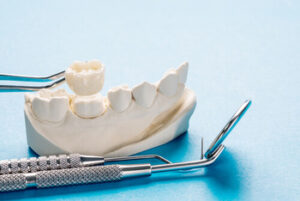Facing the choice between saving a tooth and having it removed is a moment that calls for clarity and confidence. When a tooth becomes compromised due to damage or infection, understanding your treatment options can guide you toward a solution that supports your long-term dental health and daily comfort. Knowing how root canal and extraction differ can help you make a decision that suits both your needs and your future well-being.
Root Canal vs Extraction: Preserving Function or Creating a Gap
One of the most meaningful differences between root canal vs extraction is what each procedure aims to achieve. A root canal treatment focuses on preserving the affected tooth, while a tooth extraction involves removing it entirely. Keeping the original tooth allows it to continue functioning naturally within the mouth. The bite remains undisturbed, chewing stays even, and your speech patterns are less likely to change.
When a tooth is extracted, the gap it leaves behind can lead to the shifting of surrounding teeth. This change may alter your bite and potentially require more treatments in the future. In contrast, root canal therapy removes only the infected tissue inside the tooth while leaving the outer structure intact. By choosing this method, you allow your tooth to keep doing what it was designed for without interruption or extra dental work to replace it.
Root Canal vs Extraction: Which Maintains Your Natural Smile?

On the other hand, a tooth extraction results in an empty space unless a replacement is planned. Even with options like a dental implant, the tooth won’t be your own. This can affect how your smile looks, especially if the extracted tooth is visible when you speak or laugh. Choosing a root canal means keeping your own tooth and the look that naturally belongs to you.
Root Canal vs Extraction: Protecting Neighbouring Teeth
When choosing between a root canal and extraction, it’s important to consider the effect on nearby teeth. With root canal treatment, only the infected tooth is treated. The surrounding teeth remain untouched, stable, and undisturbed in their position. This helps retain the natural spacing of your teeth and reduces the risk of misalignment over time.
In contrast, extracting a tooth can start a chain reaction. Without the support of the removed tooth, nearby teeth may drift into the gap. This shift could alter your bite and make chewing more difficult. In some cases, it may even result in additional oral issues that require correction. Saving the natural tooth whenever possible keeps your full dental structure working together in harmony.
Root Canal vs Extraction: Jawbone Strength and Long-Term Support
Your jawbone responds to stimulation from your teeth. When a tooth is lost, the bone underneath it no longer receives the same pressure and stimulation. Over time, this can lead to bone loss in the jaw, which may affect facial structure and oral strength. Choosing a root canal helps preserve this stimulation because the natural tooth remains anchored in place.
Although a dental implant can help maintain bone density after an extracted tooth is replaced, the process is more involved. In some cases, bone grafting may be needed before an implant is placed. Preserving your own tooth through root canal therapy helps you avoid these extra steps and supports your jawbone’s health in the most natural way.
Root Canal vs Extraction: Recovery Steps Compared

Tooth extraction, however, can be more physically demanding on the body. Once a tooth is removed, the site must heal before any replacement options can be considered. This creates a longer treatment journey, particularly if a dental implant is planned. Choosing to save the tooth from the start limits both the healing time and the need for follow-up dental procedures.
Root Canal vs Extraction: Upfront and Future Costs
While it might seem that removing a tooth is a simpler solution, the financial picture is more complex. After an extraction, the missing space may need to be filled to restore function and avoid further complications. The cost of a dental implant or bridge adds to the initial expense of the extraction itself.
Root canal procedures, although sometimes perceived as costly, are often more economical over time. Once the treatment is completed and the tooth is protected with a crown, no additional replacement is needed. You maintain function and appearance with a single procedure without investing in further restorations down the track.
Root Canal vs Extraction: Minimising Additional Procedures
Choosing to remove a damaged or infected tooth may seem like a clean fix. However, the extracted tooth leaves behind a need for follow-up care. If the gap is left empty, issues like food trapping, misaligned teeth, and uneven chewing pressure may follow. Restorations such as bridges or implants then become necessary.
In contrast, a root canal protects the tooth’s structure, preventing additional dental work from being needed. The root canal procedure not only removes the cause of pain and infection but also restores the tooth to full function. This approach limits the impact on your oral health and minimises your visits to the clinic in the future.
Root Canal vs Extraction: Impact on Oral Health Stability
The advantages of keeping your natural tooth through a root canal extend well beyond the treated area. A healthy, restored tooth helps maintain proper bite alignment and chewing efficiency. It also reduces the risk of developing new issues in nearby teeth since there is no gap for them to shift into.
Tooth extraction, while sometimes necessary, changes the overall layout of your mouth. One less tooth can affect everything from jaw pressure to food choices. Whenever possible, root canal therapy allows your mouth to function as it was meant to, helping to support your dental health long into the future.
Ready to Protect Your Smile? We’re Here to Help

If you’re dealing with tooth decay or a decayed tooth, visiting a clinic that understands your needs can make all the difference. Before deciding, speak with our dental professional about your goals, concerns, and the condition of the affected tooth. Saving what you can today, including your natural tooth structure, may bring lasting benefits for years to come. If you’re unsure which treatment suits your needs, a personalised assessment can provide the clarity you need to move forward with confidence. To discuss your options or schedule your visit, please call us on 02 9051 0600.
Note: Any surgical or invasive procedure carries risks. Before proceeding, you should seek a second opinion from an appropriately qualified health practitioner.
References
https://www.medicalnewstoday.com/articles/142780
https://www.webmd.com/oral-health/root-canals






